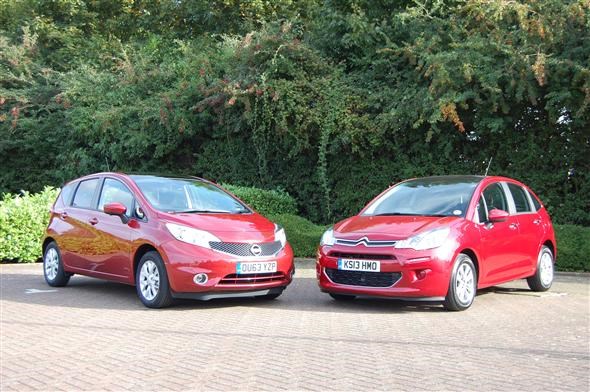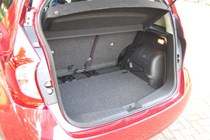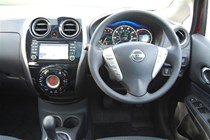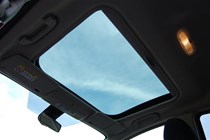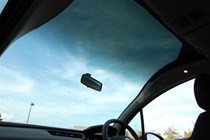Practicality and low running costs are important boxes to tick if a car is to be successful in the small hatchback arena.
The French take on the Japanese in this small hatchback twin test with the new Nissan Note going head-to-head with the Citroen C3.
But which offers the more complete package? Read on to find out…
Running costs
The C3 is cheaper to run than the Note; although they both sit in band B for road tax costing £20 per year, the Citroen returns a claimed average fuel economy of 61.4mpg while the Nissan only manages 60.1mpg.
During normal driving you’re unlikely to notice much difference between the two, but you will spot the range deficit of the Note. Since it only has a 41-litre fuel tank compared to the C3’s 50-litre capacity, the Nissan is capable of 542 miles between fill-ups while the Citroen will do 675.
At £12,940 without options, the C3 is significantly cheaper than the note, which retails at £14,150 too.
If you’d like metallic paint, Citroen will charge you £630 on the C3 while Nissan will take £500 for the same thing. The C3’s panoramic windscreen adds another £300, while the comprehensive Comfort Safety Pack will set you back the princely sum of £1,200.
Equipment
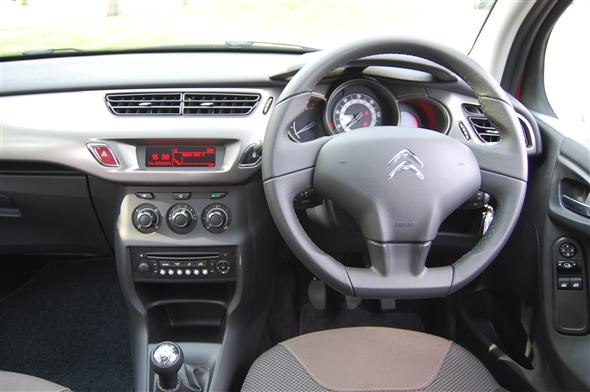
Standard equipment in the C3 and the Note is well matched, neither model misses out on any must-have kit. Both have Bluetooth, cruise control, trip computer with eco drive function, USB connection, daytime running lights and alloy wheels.
The C3 only has air conditioning and not climate control like the Note and does not include keyless entry though.
One of the highlights from the Citroen is the panoramic windscreen which makes the inside bright and airy. The Note falls short here with only a tiuny sunroof and feels dark because of it.
All of the controls and functions of both cars are easy to navigate around, though both have a budget feel. Still each uses enough variation of materials and colours to ensure the cabins are an interesting place to be.
Practically speaking
The Note is packed full of practical features to help make everyday life that little bit easier. One of the biggest assets the Note has over the C3 is its interior space, which is very impressive. The seats are able to move backwards and forwards to either extend the boot or provide more legroom.
Boot space is an impressive 411-litres when the seats are slid forwards, completely obliterating the C3’s 300-litres. Also the Nissan has a dual floored boot, unlike the C3, offering multiple storage options, though this does come at the expense of the spare wheel, which the Citroen does have.
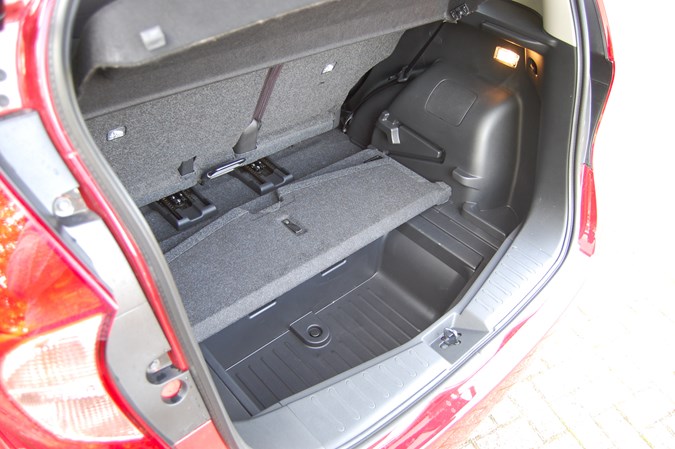
The Nissan’s back doors also open 90 degrees which makes getting in and out and placing larger items in the back very easy. They’re especially handy when placing young children in the car.
When it comes to storage options around the car the Nissan wins hands down with various cubbies, deep door pockets, cup holders and compartments available. Importantly for rear passengers, the Note also has a centre armrest with cup holders while the Citroen does not. In fact there is only one cup holder available for rear passengers.
The C3 significantly falls down on convenience kit too, not even offering electric windows in the rear, there is also no reading light in the back or front which is not practical. However it does pick up a couple of extra brownie points for the steering wheel being reach adjustable where the Nissan only offers tilt adjutsment.
On the road
Both of the cars in our test are fitted with 1.2-litre, three-cylinder petrol engines. The Citroen’s is slightly less gruff than the Nissan’s, especially at motorway speeds when the latter car seems to get incredibly noisy.
They’ve both got roughly the same amount of power and torque – 79bhp and 110Nm for the Nissan, 82bhp and 118Nm for the Citroen – but the latter car does feel quicker on the road. This is confirmed with the 0-62mph time, which is 13.7 seconds for the Note and 12.3 seconds for the Citroen.
In terms of handling the Nissan wins but only by a small margin. Both are agile cars and they’re very easy to drive. There is less body-roll in the Nissan, which is mainly why it triumphs.
Verdict
The winner: The Nissan Note
These two cars are very closely matched when it comes to running costs but although the Note does cost more to buy than the C3, the extra equipment and practicality make it worth the extra cash. The only thing holding the Note back is its marmite looks which may not be to everyone’s taste.
Just so you know, we may receive a commission or other compensation from the links on this website - read why you should trust us.


